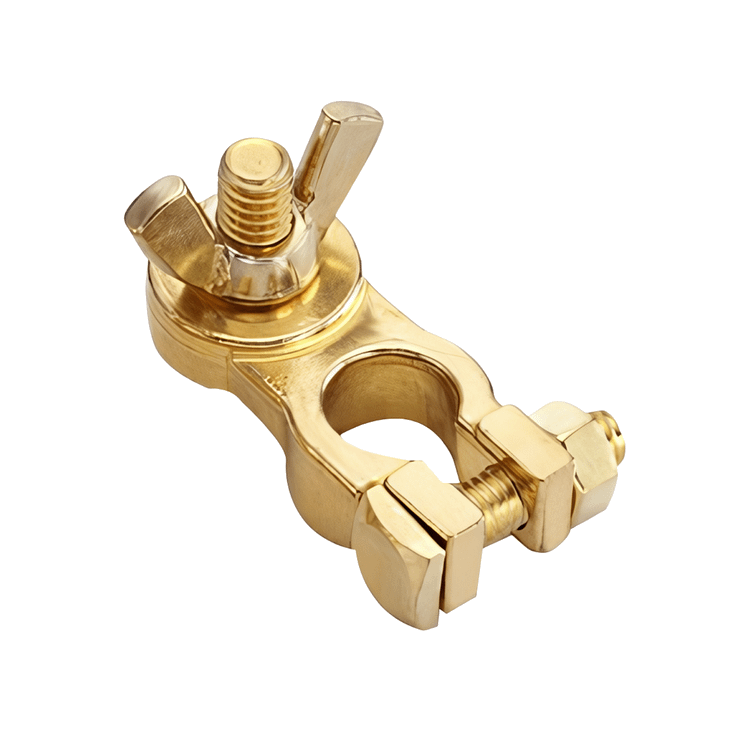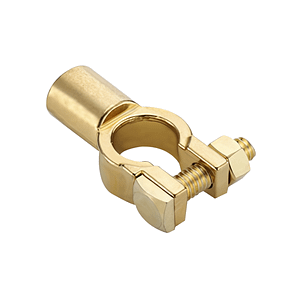



Brass Battery Terminals
Brass battery terminals are critical components in automotive electrical systems, providing a reliable connection between the battery and the vehicle’s electrical components. These terminals play a crucial role in ensuring proper power distribution, starting the engine, and operating various electrical accessories. Crafted from high-quality brass, these terminals offer durability, corrosion resistance, and excellent conductivity, making them an essential part of any vehicle’s electrical system.
Brass battery terminals are indispensable components in automotive electrical systems, providing reliable connections for starting the engine, powering electrical accessories, and maintaining vehicle performance. With their robust construction, corrosion resistance, and excellent conductivity, brass terminals offer durability and reliability in challenging automotive environments. Whether for OEM (original equipment manufacturer) installations or aftermarket upgrades, brass battery terminals play a vital role in ensuring the efficient operation of vehicles and the safety of drivers and passengers.
Robust Construction
Brass battery terminals are designed to withstand the harsh conditions of automotive environments. Constructed from solid brass or brass-plated steel, these terminals offer superior strength and durability, ensuring long-term reliability even under extreme temperatures, vibrations, and exposure to corrosive elements. This robust construction ensures secure connections that remain stable over time, minimizing the risk of electrical issues or failures.
Corrosion Resistance
One of the key advantages of brass battery terminals is their resistance to corrosion. Brass is inherently resistant to rust and oxidation, making it ideal for use in automotive applications where exposure to moisture, road salt, and other corrosive substances is common. This corrosion resistance helps maintain optimal electrical conductivity and ensures a stable connection between the battery and electrical components, preventing voltage drops and electrical failures.
Versatility and Compatibility
Brass battery terminals come in various shapes and configurations to accommodate different battery types and sizes. Whether for top-post or side-post batteries, brass terminals are available in a range of designs, including standard, wing nut, and bolt-on terminals, to suit various installation requirements. Additionally, brass terminals can be customized with features such as integrated fuse holders or quick-disconnect terminals to meet specific application needs.
Ease of Installation
Installing brass battery terminals is a straightforward process that requires minimal tools and expertise. Most terminals feature a simple design with clearly marked positive and negative terminals, making it easy for technicians and DIY enthusiasts to identify and connect them correctly. Tightening the terminal connections securely ensures a reliable electrical connection, helping prevent loose connections that can lead to electrical issues or battery failure.
Maintenance and Care
While brass battery terminals are highly durable and resistant to corrosion, regular maintenance is essential to ensure optimal performance and longevity. Periodic inspection and cleaning of the terminals and battery posts help remove corrosion buildup and ensure good electrical contact. Applying a corrosion inhibitor or dielectric grease to the terminals can further protect against corrosion and extend their service life, particularly in harsh operating conditions.
Conclusion
Brass battery terminals are indispensable components in automotive electrical systems, providing reliable connections for starting the engine, powering electrical accessories, and maintaining vehicle performance. With their robust construction, corrosion resistance, and excellent conductivity, brass terminals offer durability and reliability in challenging automotive environments. Whether for OEM (original equipment manufacturer) installations or aftermarket upgrades, brass battery terminals play a vital role in ensuring the efficient operation of vehicles and the safety of drivers and passengers.






